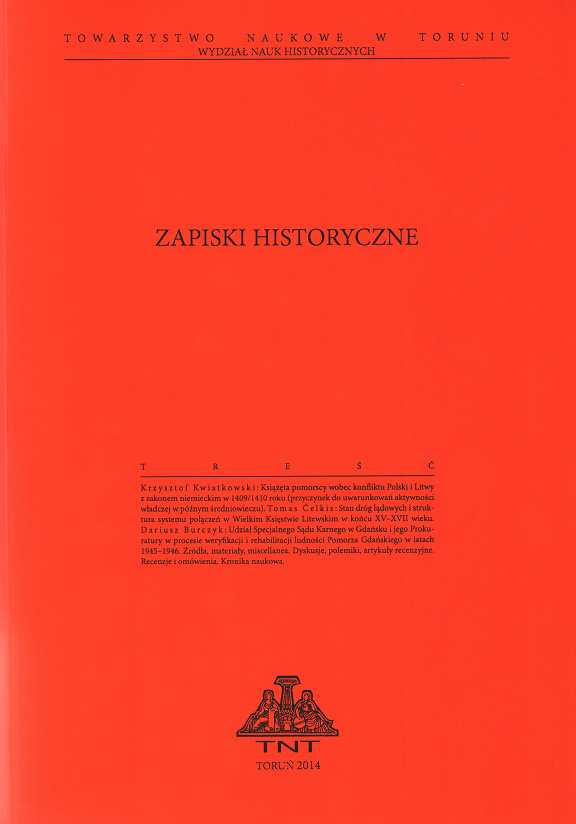
We kindly inform you that, as long as the subject affiliation of our 300.000+ articles is in progress, you might get unsufficient or no results on your third level or second level search. In this case, please broaden your search criteria.

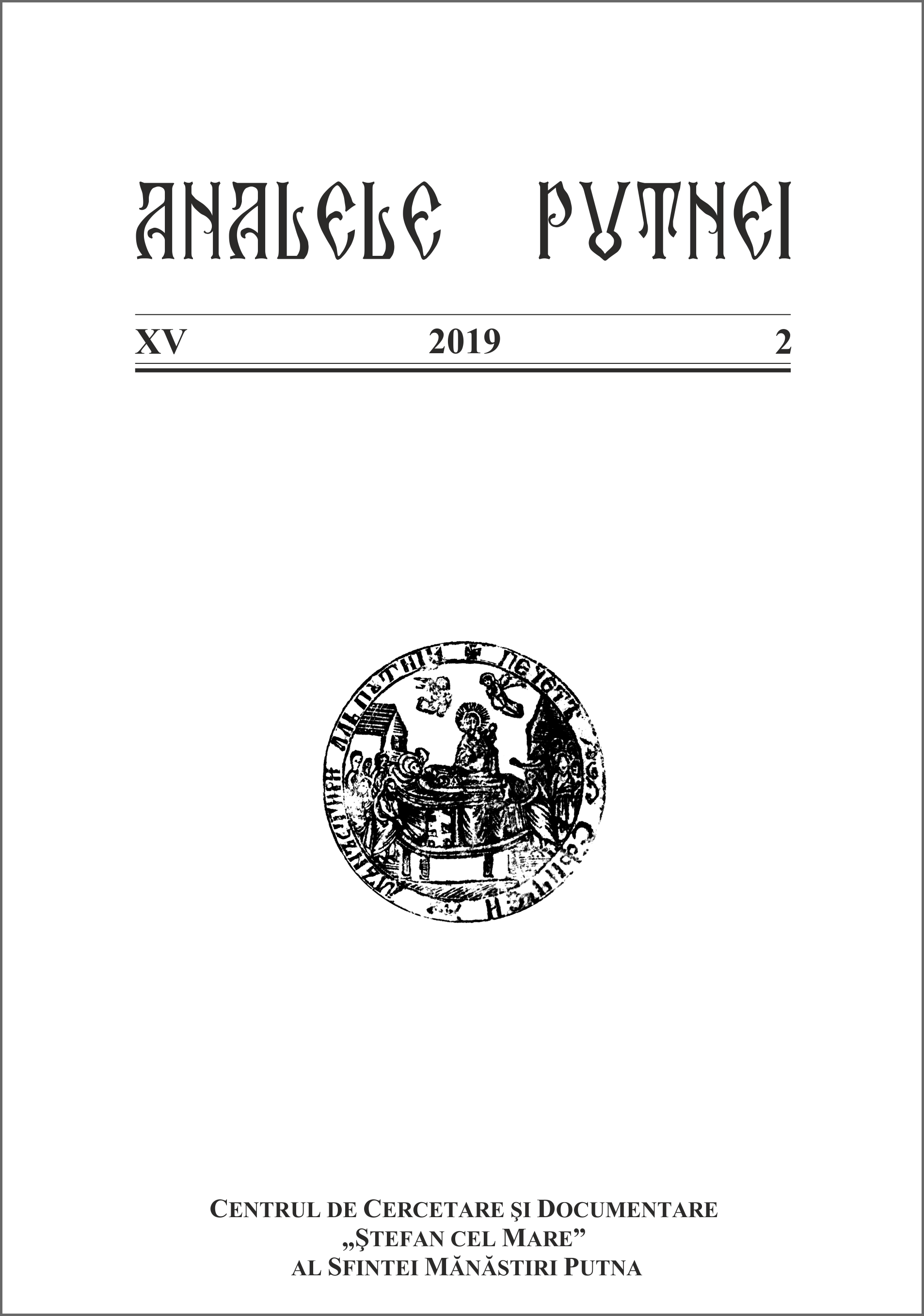
The present paper (digitally) completes the manuscript of the Diptych of Putna Hermitage, written in 1768 by hieroschemamonk Nathan (the monastic scholar Nathanael Dreteanovschi), which is preserved in the library of Putna Monastery, with 7 folios (14 pages), which are preserved in the Russian State Library from Moscow (fund 722, no. 263). They are rendered full-color.
More...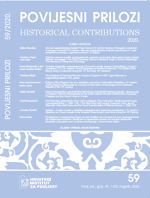
As part of the study of the military history of Dalmatia and the Venetian Republic through several centuries of existence in a common state union, the share of Croats in the Venetian military forces has been assessed as extremely significant. Operating as the local (territorial) units, as well as members of professional forces (Fanti oltramarini – infantry; Croati a cavallo, Cavalleria Croati – cavalry), soldiers from Dalmatia made a notable contribution to the preservation of Venetian territorial acquisitions from Veneto (terraferma) to the south of the eastern Adriatic coast. Investigation of this issue is complex and requires an analysis of documents stored in the Archivio di Stato di Venezia and the State Archive in Zadar, as well as other Croatian and international archival institutions and libraries. Following several years of research on this issue, this paper focuses on the role of Spalatans in the Croatian cavalry under the standard of St Mark in the 18th century, and is based on an analysis of sources from the collection of Inquisitori sopra l’amministrazione dei pubblici ruoli in the central Venetian state archives. Based on the said documents, as well as previous historiographical insights, the author focuses on the time frame of the Spalatans’ participation in the abovementioned cavalry unit, the method of their documentation, the duration of military service, the share of members from the same families, personal (physical) features of soldiers, the location of their documentation, and the command staff of the units in which they operated. The presence of Spalatans in Venetian cavalry can been observed throughout the century, while the places of their activity (documentation) reflect the distribution of Venetian acquisitions from the terraferma through Dalmatia and the Bay of Kotor to Greece, also testifying to the mobility of elite Venetian land units. The Spalatan cavalrymen fit into the wider sample of Croatian soldiers in the land forces of the Serenissima at that time in terms of age and personal (physical) features. The lists of soldiers reveal various aspects of the military careers of individual families such as the length of their military service, their career advancement, as well as a number of surnames that we believe can be an interesting source for studying the onomastics of Split during the period in question. The conclusion of the paper is that the Spalatans formed a very notable part of the Croatian cavalry under the standard of St Mark and that the analysis conducted here contributes to the military history of Dalmatia (in this case the city of Split) and the Venetian Republic in the last century of living in a common state.
More...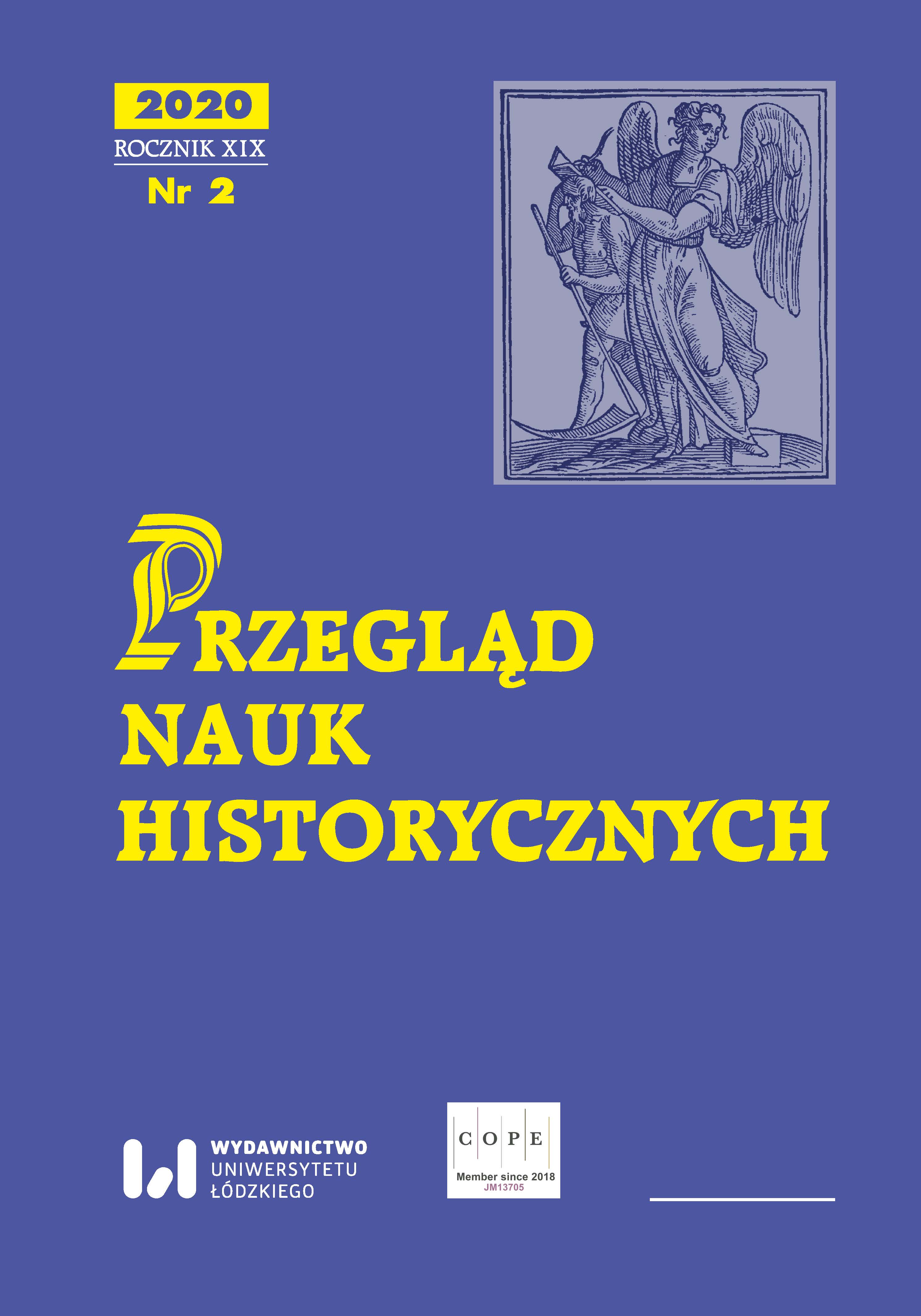
This article discusses selected aspects of the way Lithuanian sejmiks proceeded in the times of Permanent Council (especially in the years 1776–1786). The author refers to particular pieces of information on the county of Kaunas which were mentioned in Akta sejmiku kowieńskiego w latach 1733–1795 published by Monika Jusupović in 2019. The information found in the abovementioned book was tested against the relevant data concerning the sejmiks of Lida and Ukmergė collected in the process of research in the archives of Minsk and Vilnius. For comparative reasons the author of this article makes use of the results of research by Lithuanian historians (on the sejmik of Vilnius) as well as the contributions of Polish and Belarusian historians. The author focuses (among others) on the functioning of economic, relational and electoral sejmiks. The article also contains information on different types of sejmik documents which were typical for Lithuanian parliamentary practice. Besides, it discusses additional items of information related to the political life in the county of Kaunas which were not referred to by M. Jusupović. The final part of the article emphasizes distinctive aspects of research on the Lithuanian parliamentary practice. Owing to the custom of signing the sejmik lauda by the unlimited number of participants, it is now possible to state roughly how large the gathering was. In the second part of the 18th c. there were still considerable differences between the sejmiks in the Crown and Lithuania even though the models in respective countries tended to converge.
More...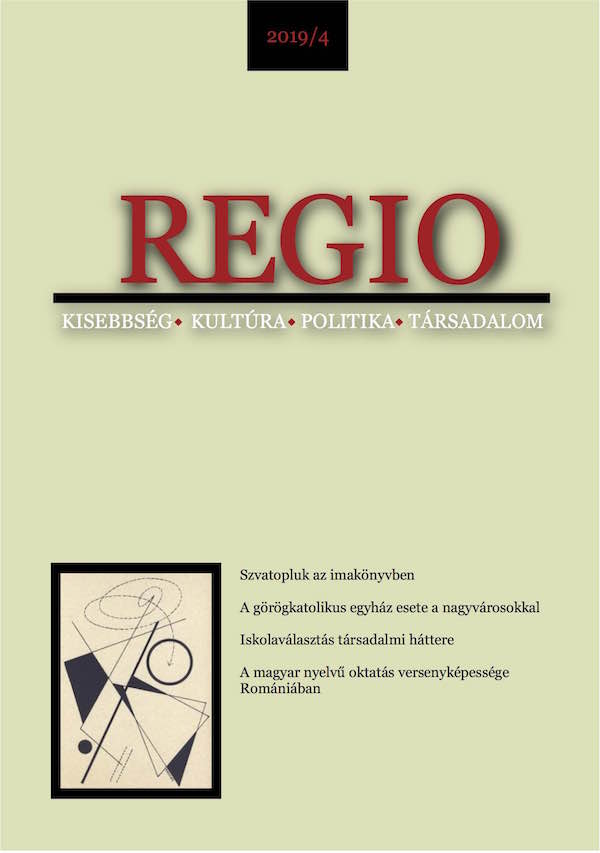
Borsi-Kálmán Béla: Elvetélt bizánci reneszánszból Nagy-Románia. Egy állameszme etnogenezise, Budapest: Magyar Szemle, 2018. 232 o. (Magyar Szemle Könyvek).
More...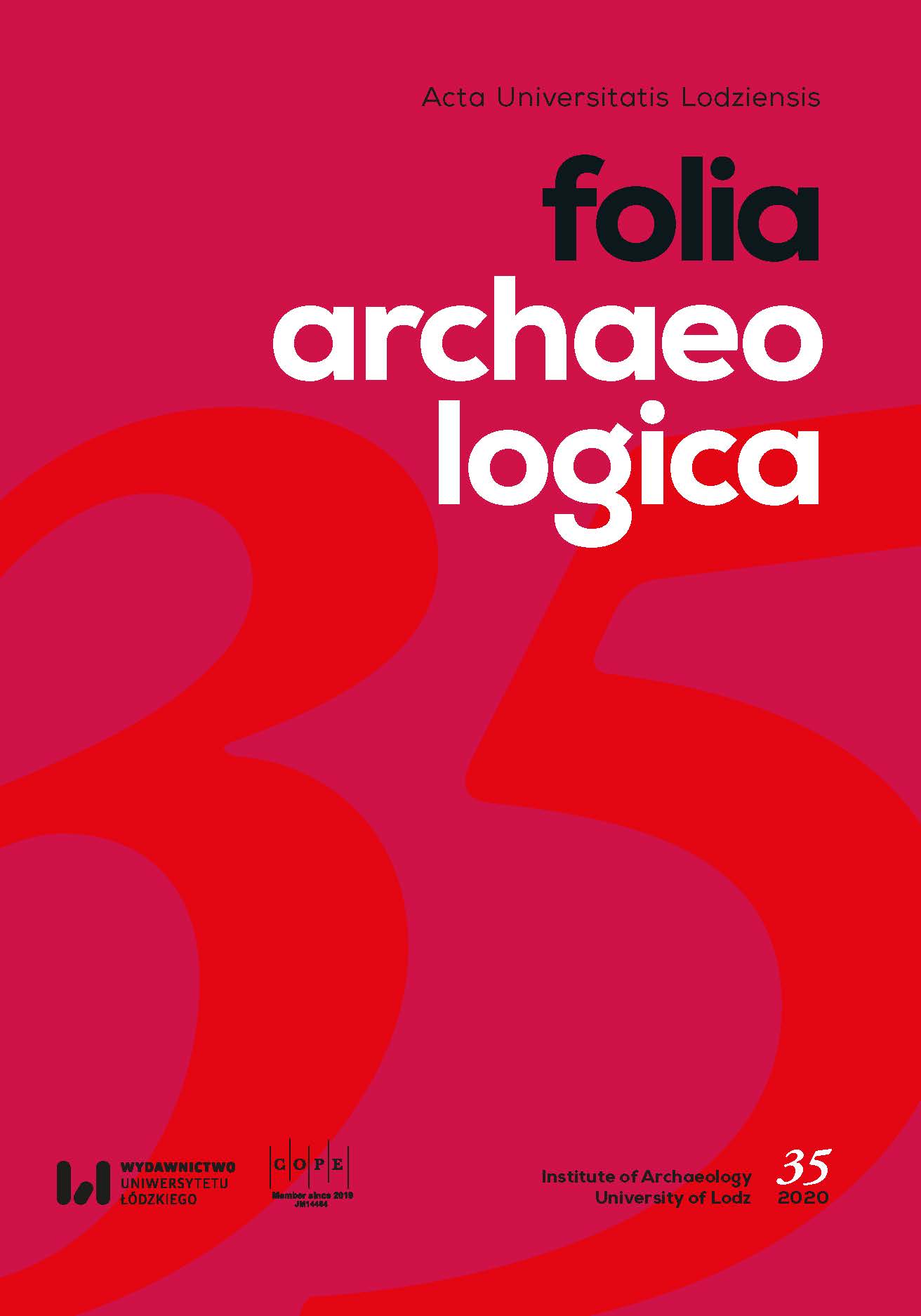
A discussion on modern shoes is limited on account of the scarcity of sources provided by archaeological research. This gap is to a certain extent filled by museum collections and iconography. This is why it is so important to publish new finds as one can only initiate discussion on isolated artefacts of open-back shoes based on such publications. Such a pair was found in the southern crypt of the Church of the Nativity of the Blessed Virgin Mary in Piaseczno. These are unique objects as it is possible to identify all their elements and to determine the quality of leather, which was rather thick. Their general state of preservation is good. The condition of the leather on the soles, heels, and uppers indicates that the shoes were intensively used when their owner was alive. There is no difference in cut between the left and the right shoe, however, deformations resulting from wearing allow to say which shoe was worn on which foot. The pair of shoes found in Piaseczno and described above represents a valuable contribution to the discussion on open-back shoes. When interpreting such finds, the basic difficulty is the determination of their function. In specific circumstances, functions of overshoes and home shoes could to a certain extent overlap. However, it seems that in the modern era separate pairs of shoes were made to serve these different purposes. Unfortunately, the only evidence that would allow to lean towards one of the options involves the categories of massiveness and size of the shoes, and the diversity of the materials used. The paper uses a number of names for open-back shoes (pattens, mules, chopines, slippers, pantables) to reflect the linguistic richness. There is no doubt that different designs used to have individual names, however, the scarcity of accounts makes it very difficult to reconstruct the linguistic reality of old.
More...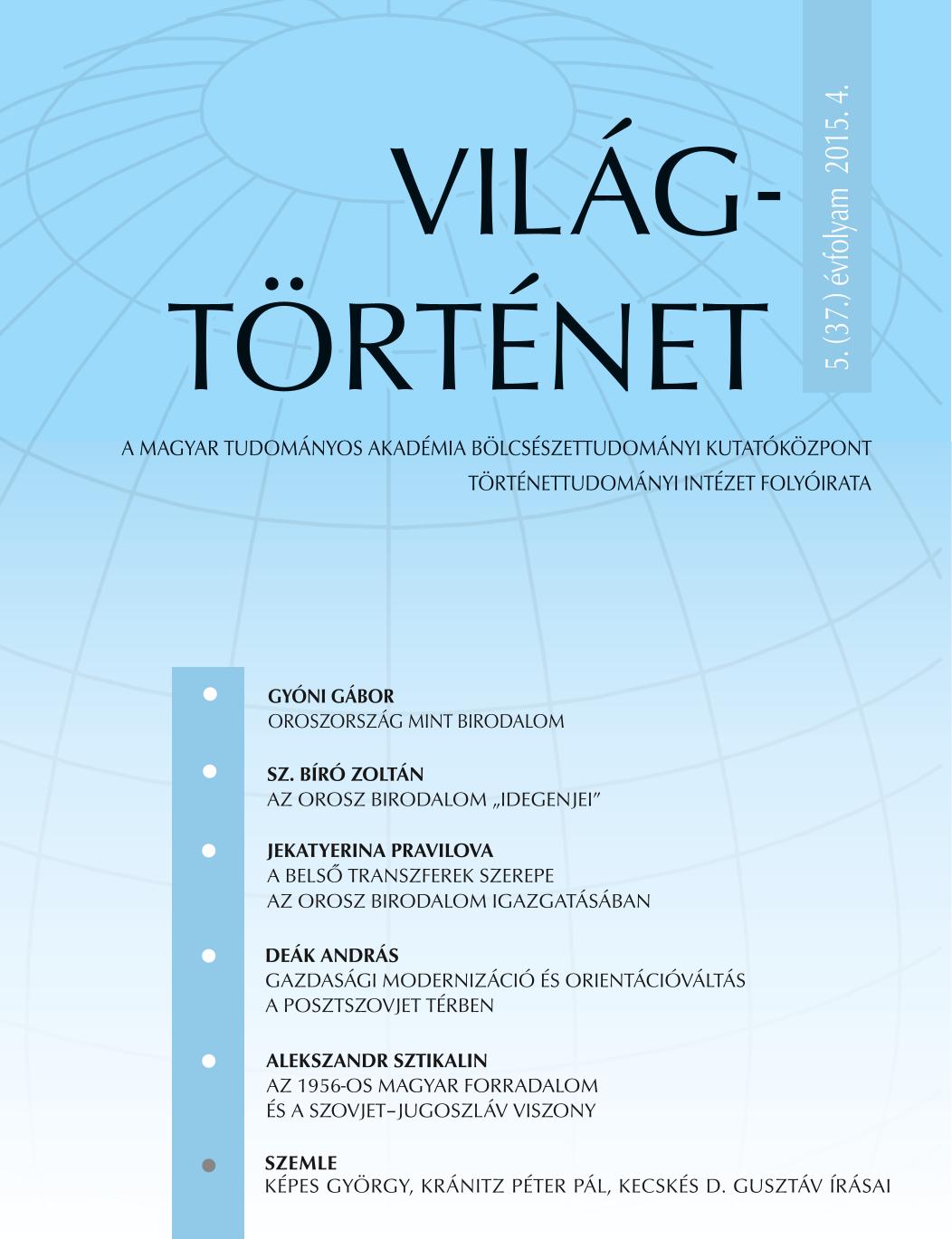
An important feature of 18th-century Russian History was the advent of female rule, after the death of Peter the Great in 1725. Beginning from the reign of Empress Anne (1730–1740) female figures became prominent in the coronation medals of the empresses which could not be accidental: they clearly served, in my view, to legitimize the given woman on the throne. This phenomenon marked an important shift in the gender of the iconography of power. The 17th-century “Christo-centric”, i.e. male-gendered iconography had to be replaced with a new, female-gendered iconography corresponding to reality. Neutral (in the sense of gender) visual representations of divine right, namely through rays radiating from a cloud or a triangle (with or without the all-seeing eye) of course remained crucial. At the same time, divine will had to be personified in a way that made possible to associate it with the gender of the reigning monarch. This task was accomplished mostly by the female allegorical representation of Divine Providence.
More...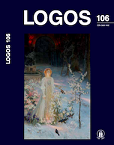
The article provides a historically informed exposition of Immanuel Kant’s notion of enlightenment. The 18th century marked the zenith of absolute monarchy in Europe. The century was accompanied by the emergence of new social, economic, and technological conditions and the simultaneous rise of an intellectual culture that sought a wider public adoption of independent critical thinking through the proliferation of schools and academies across the Old Continent. This was the semantic setting in which Kant poses and answers the question of enlightenment. The article explicates the individual and societal aspects of the Kantian concept of enlightenment, while stressing their argumentative dependency on the analytic distinction between the public and private uses of reason. Enlightenment is conceived by Kant as a gradual progress both of the individual and of society towards a fuller mastery of their rational capacities, especially as they pertain to the public sphere of life. The philosopher’s insights are as relevant to our times as they were to his.
More...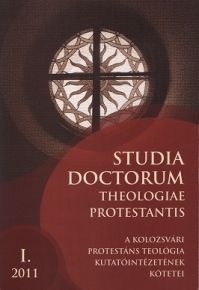
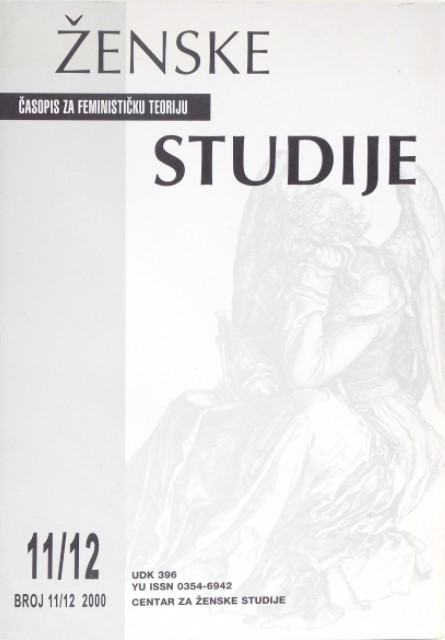
The paper deals with the function of authorial prefaces and the change of their role within the novel of the Enlightenment period. The main idea of the article - transformation of the prefaces’ meaning - emerges from the altered narrative perspective (and narrative), which in the second part of eighteenth century became more self-centered, while prefaces appeared as a line of separation, a distinguishing line between fiction and reality.
More...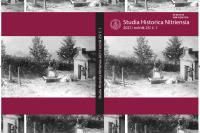
The craftsmen guilds were an integral part of the municipal society in every free royal town and privileged landlord cities in the territory of present Slovakia as a part of the former Hungarian Kingdom during the Early Modern Period. The privileged town of Nitra was the property of local bishop and its burghers possessed a lot of privileges and rights. Most of them worked as artisansand therefore they associated themselves to the guilds for protection of their crafts. Craftsmen inNitra made its production for the need of local inhabitants only. During the 16th and 17th centuriesmost of the artisans in Nitra got the rules of their guilds through the charts issued by bishop of Nitraas landlord. The bricklayers in Nitra and Nitra county established their guild on the 24 July 1724, when the Emperor and King Charles the Sixth (the Third) of Habsburg issued the royal privilegefor them.
More...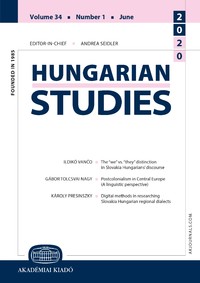
Der Aufsatz beschäftigt sich mit der Rezeptionsgeschichte der Gedichte Albrecht von Hallers im Ungarn des 18. Jahrhunderts. Als Grundlage für die Untersuchung dienen die Haller-Zitate in zeitgenössischen Stammbucheinträgen. Mit dieser Frage setzten sich zwar sowohl deutsche als auch ungarische Forscher schon früher auseinander, jedoch, wie im vorliegenden Aufsatz behauptet wird, unter Anwendung einer gewissermaßen falschen Methode. Es wurde nämlich in diesen früheren Arbeiten nicht näher darauf eingegangen, ob das Zitat gegebenenfalls einer sekundären Quelle entnommen wurde. Dieser Ansatz führte jedoch zu falschen Schlussfolgerungen. Vorliegender Aufsatz versucht, die aus sekundären Quellen stammenden Zitate von jenen aus dem „Original“ zu unterscheiden. Es wird festgestellt, dass die in Stammbucheinträgen im 18. Jahrhundert zu lesenden Haller-Zitate überwiegend aus nachweislich sekundären Quellen herzuleiten sind. Je „berühmter“ ein Autor war – diesen Eindruck gewinnt man anhand des Korpus –, umso mehr zitieren ihn die Zeitgenossen aus indirekten Quellen.
More...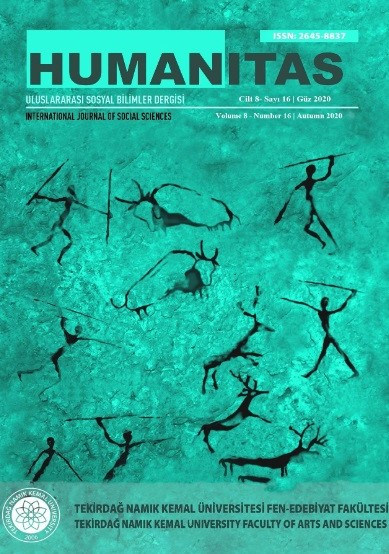
Mehmet Rauf (1875-1931) is a writer in Turkish literature whose name is best known for his novel, Eylül. However, he is considered one of the most important representatives of the prose of Servet-i Fünun period after Halit Ziya. The author generally wrote works that included types of love, frustrations, and male-female problems. In his first works, he does not worry about the disrupted aspects of society. However, the writer's literary understanding changes with his latest novels, Halas and Define. The author has designed his work to strengthen national awareness and resistance within the framework of another character by focusing on the love of homeland as a theme in Halas. For this reason, it is among the novels describing the national struggle in Turkish literature. In this study, a brief information about the author’s writing has been made and “Halas” has been examined in the context of Turkism from the idea movements.
More...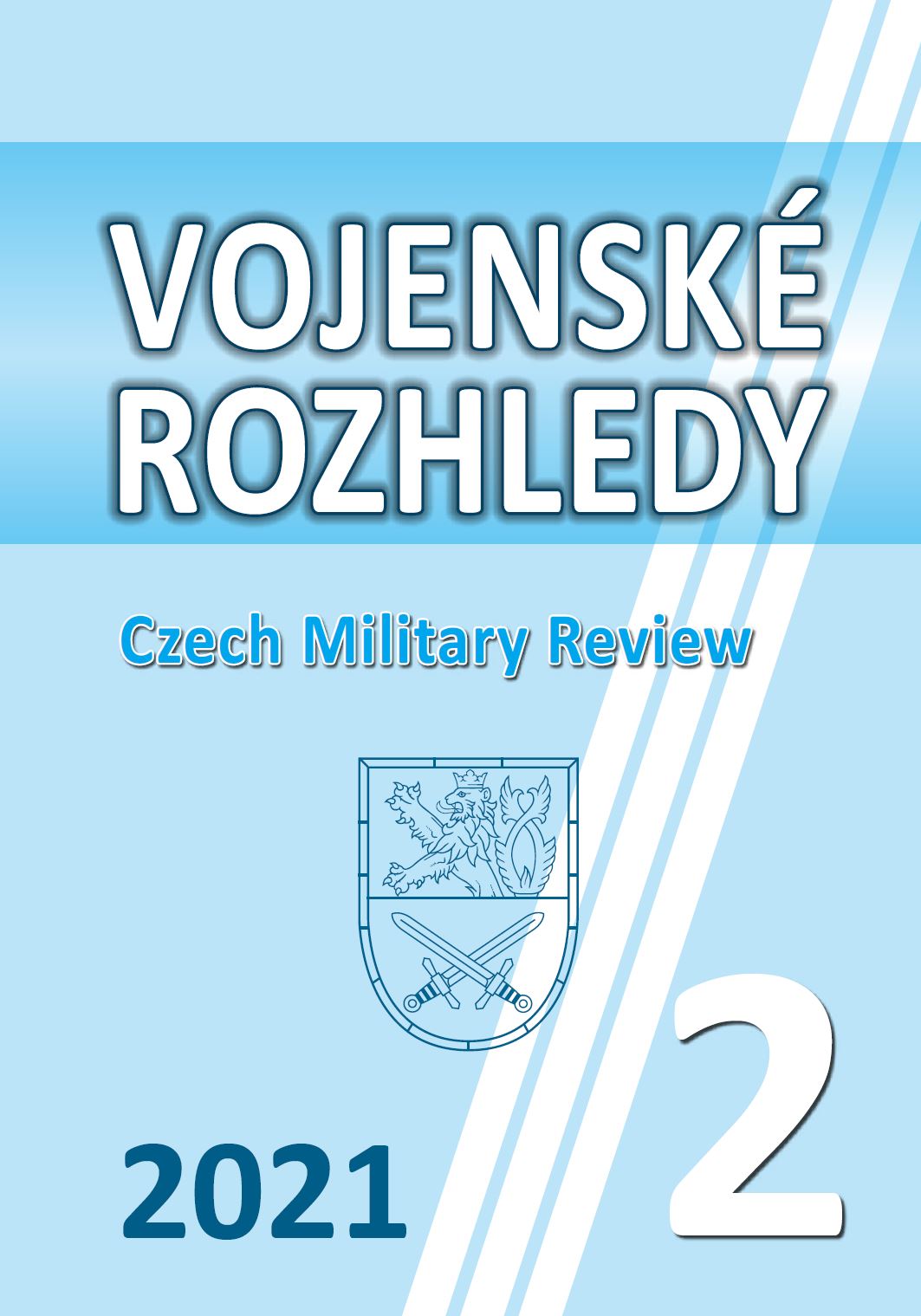
This paper contains a facsimile of an article from Vojenské rozhledy published in 1921.
More...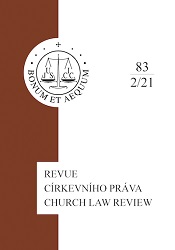
V obci Chodov u Prahy v pražské arcidiecézi se v květnu roku 1725 narodil manželům Janu a Zuzaně syn Jan Zavřel. Byl pokřtěn 10. května téhož roku ve farním kostele Stětí sv. Jana Křtitele v Hostivaři farářem Jindřichem Františkem Kohoutem. Jako kmotři jsou uvedeni Jan Ludvík ze Šeberova a Jan Šterl, syn purkrabího Jana Šterla staršího z Chodova, a jako svědek je uvedena paní Kateřina, manželka Ondřeje Kolínského, rovněž z Chodova.
More...
The Russian Imperial Army fought for the first time in the mountains in 1799, when Alexander Suvorov led his corps from Italy across the Swiss Alps to join the Russian forces at Zurich and expel the French Army from Switzerland. His soldiers were skilled professionals who had won an impressive series of battles in Italy against the French. Suvorov did not anticipate problems in the Alps, being convinced that he would easily sweep away the small French garrisons deployed on his way. Yet, because of inexperience in mountain warfare, Suvorov’s corps struggled against enormous strategic, tactical, and logistical challenges, lost half of its manpower and failed to attain its goals. The Swiss trek shows that mountain warfare defies amateurism, dilettantism and spontaneity. Even though mountains are located on the verges of Russia, the Russian and then Soviet armies ignored the peculiarities of mountain warfare and fought every new campaign in the mountains the same way they would fight on the plains, with predictably dire consequences.
More...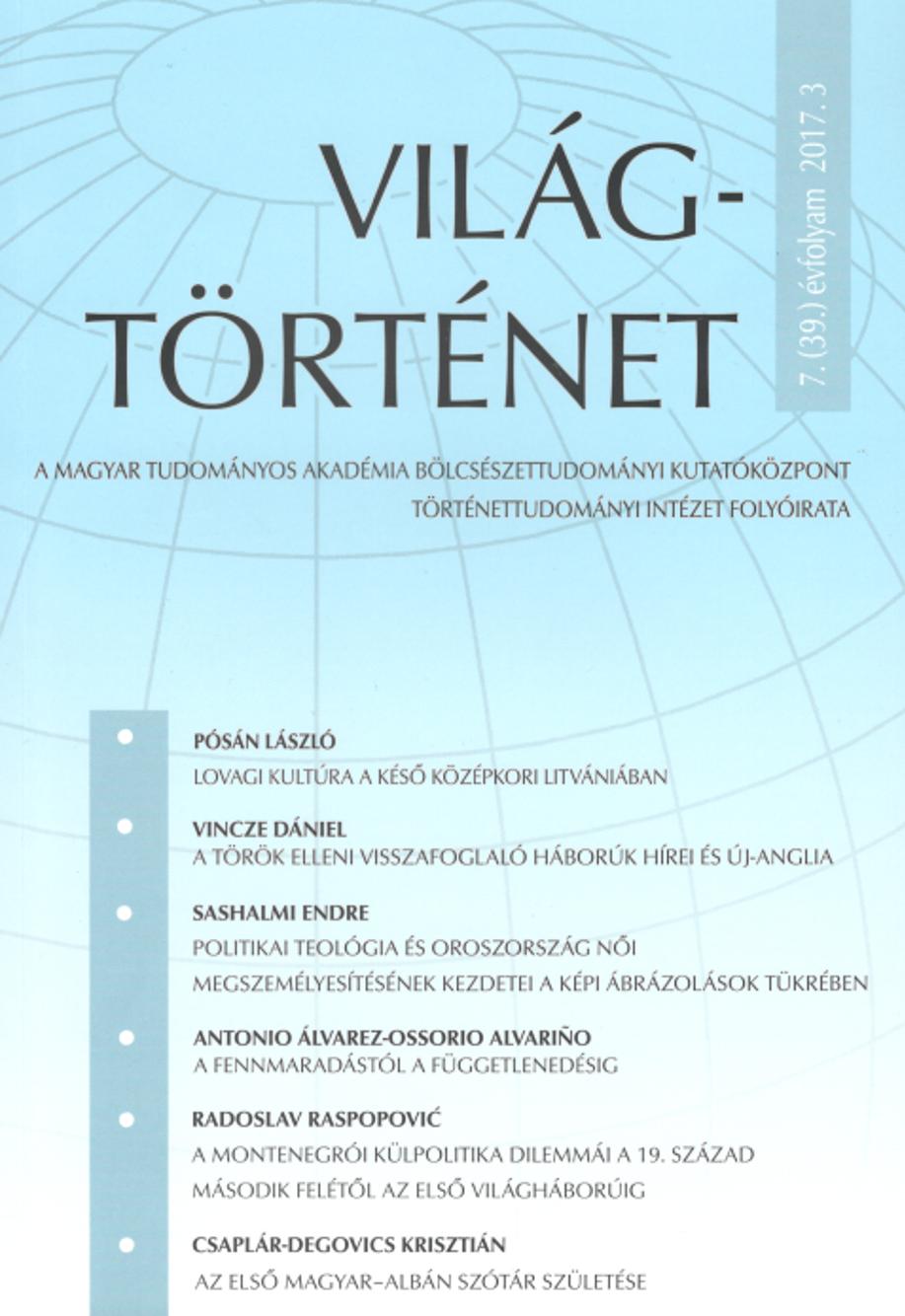
The Spanish Succession War was a civil and international conflict. It remarks the end of Spanish dominion in Italy, but it was the end of a long process of desegregation and not a fortuity happening. It’s a long term process more complex than an explanation of a falling down of an Empire. The Italian elites from 1640 were increasingly autonomous and, the weakly Spanish power, give them more authority in the second half of the century. They gained a position that determines that after the threats of Utrecht and Rastadt the change of sovereignty did not disturb, essentially, the dairy life, business and social behavior of the Italian elites (with the exception of singular personalities and a little group of families).
More...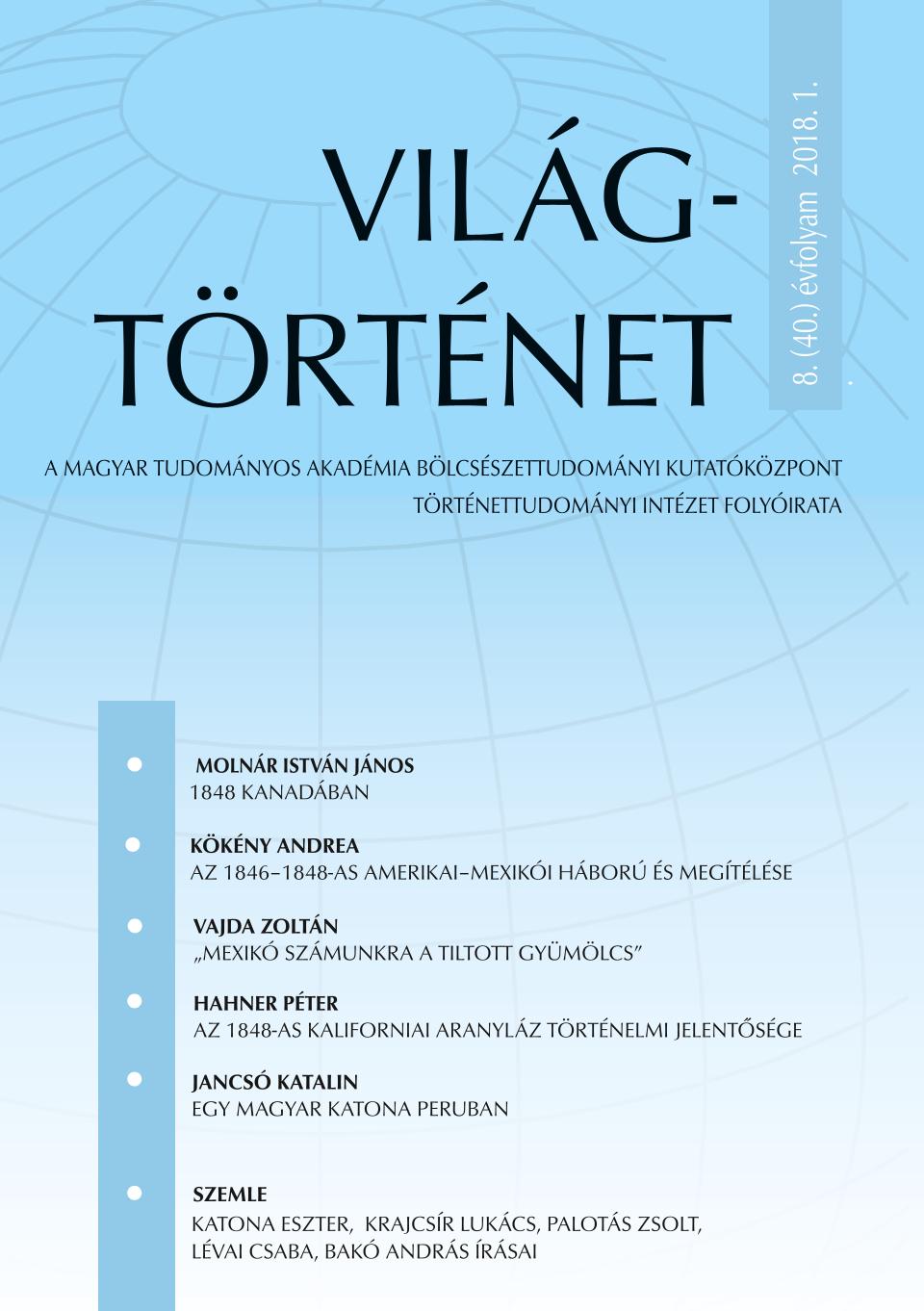
J. Nagy László: Forradalom az Antillákon. Haiti 1789–1804. Szeged, Universitas Szeged Kiadó, 2012. 144 p.
More...
The town of Izmail previously located in the province of Bessarabia and at present within the region of Odessa in Ukraine. Before its fortress having been taken by generalissimus A. Suvorov in 1790, its fortress used to be one of the famous Armenian centers, where Armenians had several churches, were engaged in handicraft (especially in tailoring) and trade. About a dozen of epigraphs, found in the Armenian cemetery adjacent to St. Astvatsatsin Church, were published by Christopher KuchukHovhannisyan. Unfortunately, those epigraphs have not been preserved but two epitaphs have recently been discovered in Izmail (1725, 1758). The discovery of new tombstones again reaffirmed once again the active life of the Armenian community in Izmail, especially in the 18th century, as well as it served as an occasion to refer to the history of this Armenian colony and to the non-preserved epigraphic inscriptions in a new way.
More...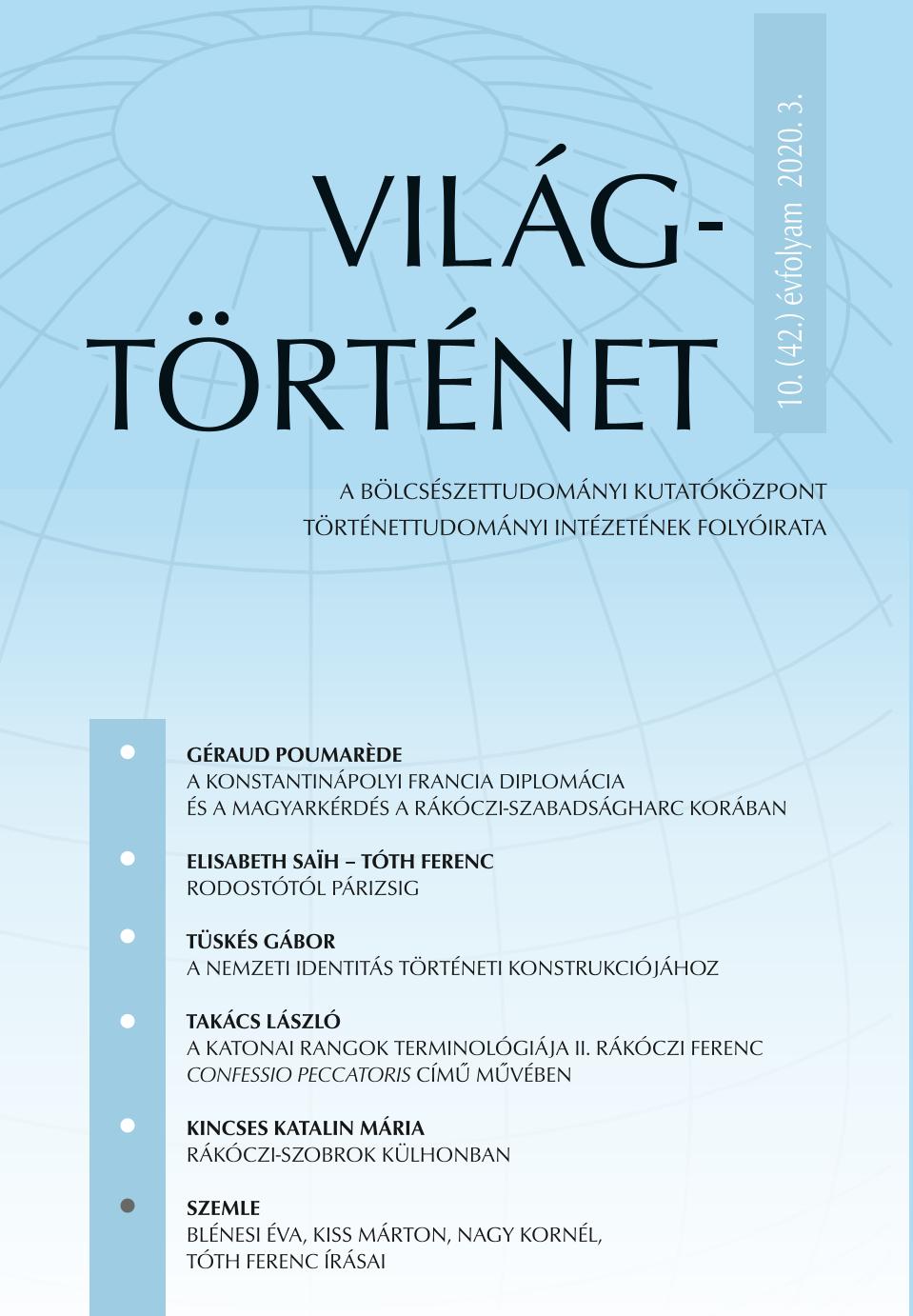
As a Transylvanian playwright, Boér Sándor has dedicated an entire dramatic series to the history of Hungary. The present study aims to offer a contextual interpretation of the only play left in manuscript of this series. His drama Bonnévál vagyis az idegenek Konstancinápolyban [Bonnévál or the Strangers in Constantinople], written at the beginning of the 19th century could be regarded as a historic comedy, but historic facts and their commentaries presented in the play, mixed with fictional sequences offer a particularly interesting anchor point for interpretation, as they focus on a taboo theme: the life of Francis II Rákóczi (former Prince of Transylvania) and his court in exile. The play presents the visit of Humbaracı Ahmed Paşa, a former Christian military officer known as Count Bonneval and his encounter with the exiled Prince Francis II Rákóczi , as well as their contribution to the suppression of the Janissaries Uprising (1830). All this comprises a rather melodramatic theatrical solution but also, it puts emphasis on the special political connections between Europe and the Ottoman Court.
More...